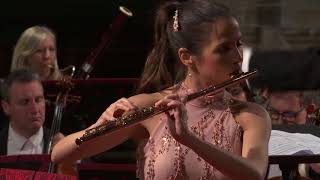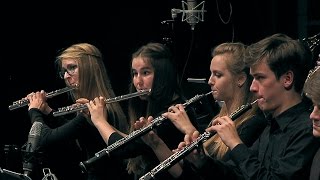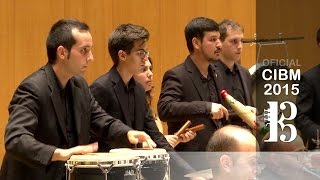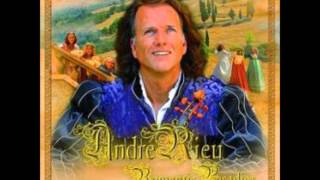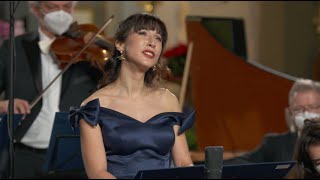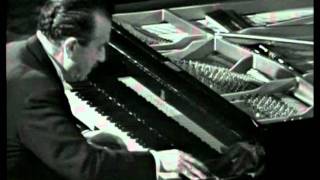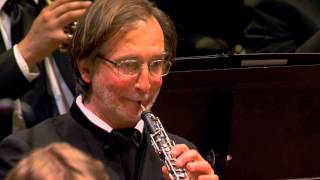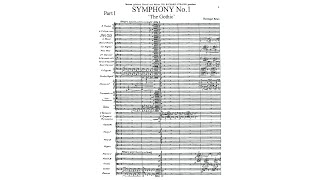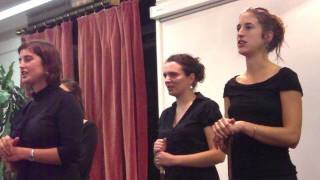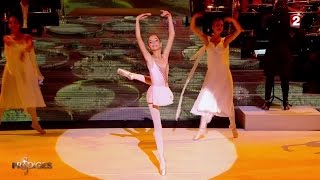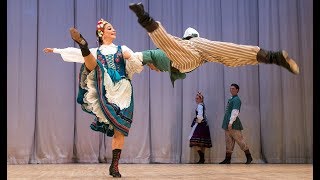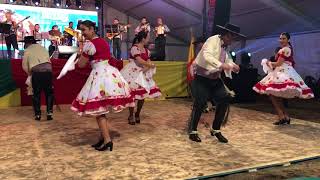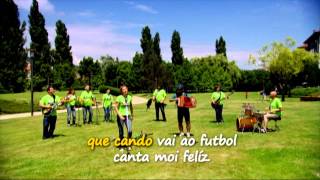Recommended music videos for initiation to classical music
Wolfgang Amadeus Mozart (1756-1791) is considered one of the three giants of musical composition along with Bach and Beethoven . Child prodigy born in Salzburg (Austria), at the age of six he mastered the keyboard and violin and began to compose. His father, Leopold, exhibited him on exhausting tours of different European courts. Prolific composer (more than 600 works written from the time he was five years old until his death) he cultivated all types of musical genres: piano works, chamber music, symphonies, concert works, choral works, operas... each and every one of them, masterpieces of its gender. His operas The Magic Flute, Don Giovanni, Cosí fan Tutte, and The Marriage of Figaro are among the 10 most performed operas in the world. He died in Vienna at the age of 35.
The rondo , round or circle dance is a secular musical form of the French Middle Ages based on the repetition of a musical theme that is characterized by constant appearance of a chorus and a loving text. Couperin defined it as a form that is based on "a main theme that reappears and alternates with different intermediate themes, called couplets." The typical feature of any rondo is the return to the main theme after each digression, which provides contrast and balance; where the number and length of these are always different. These repetitions alternate with musical themes or episodes called contrasts (ABACA).
Today we present the Rondo in D Major K.Anh.184 for flute and orchestra, although it was originally written by Mozart for violin and orchestra, with Elisabet Franch as solo flute accompanied by the Arteviva Chamber Orchestra conducted by maestro Matteo Baxiu
Hector Berlioz (1803-1869) was a French composer, an eminent figure in programmatic music and romanticism in general. He studied in Paris and Rome , where he received a scholarship, focusing on the hymns of his teacher, Jean-François Lesueur , and imitating Beethoven a lot, then unknown in France ; also to Gluck, Mozart, Étienne Méhul and Carl Maria von Weber. In 1844 he composed the first known work for saxophone, the Canto Sagrado sextet, which was premiered under the baton of Berlioz himself and with Adolphe Sax on saxophone. He also wrote several symphonies (among which his best-known work, the Symphonie Fantastique , stands out), opertures, operas, cantatas, sacred music, non-theatrical dramatic works, choral works and numerous songs.
The Symphonie Fantastique , op.14, subtitled Episode in the Life of an Artist , premiered on December 5, 1830 at the Paris Conservatory . Performed under the direction of François-Antoine Habeneck , it enjoyed immense success in its reception. The symphony, considered the first example of programmatic music (music that aims to evoke ideas and images in the listener's mind, musically representing a scene, image or mood). In the 2nd movement, which we offer today, A Dance , the reunion with the beloved after rejection occurs, as its name indicates, in a dance. The music then adopts the tempo of a waltz, thus describing the restlessness of the protagonist.
Today it is offered to us by the Symphony Orchestra of the Feliks Nowowiejski School of Music in Gdańsk, Poland under the baton of teacher Sylwia Anna Janiak
Victor Hugo Berrocal Montoya (1947) is a Costa Rican composer and conductor. Known as “Periquín”, Berrocal has developed an important repertoire with popular orchestras and ensembles in his country. He has also composed for concert orchestras, including solo concertos for trumpet and band, clarinet and band, or flute and band. He leads a life as a trumpeter, arranger and composer of such famous songs as Alajuelita and symphonic works like Limón por siempre , while as in the present case, YouTube serves as a tool to remember another of his recent compositions El mambo de la big big big . The Association of Composers and Musical Authors (ACAM) awarded him the 2012 Ricardo Reca Mora Award , for a life dedicated to musical creation. (Extracted from the article by German Gerardo Delgado Coto . Source, La Nación , May 12, 2012.)
Mambo is a musical rhythm and dance native to Cuba . The word “ mambo ” is an Afro-Blackism, similar to other African-American musical terms such as conga, milonga,bomba, tumba, samba, bamba, bambulá, tambo, tango, cumbé, cumbia and candombe , which denote an African origin, and particularly Congolese. The mambo was created in the late 1930s by the brothers Israel Cachao and Orestes López , when they were part of the Arcaño y sus Maravillas orchestra, accelerating the danzón and introducing a syncopation to the percussion.
Today we offer the Mambo De La Big Big Big by Víctor Hugo Berrocal performed by the Wind Orchestra Zaragoza (WOZ) conducted by maestro Frank de Vuyst .
André Rieu (1949) is a Dutch violinist, composer and conductor; He has belonged to different orchestras until he founded the Johann Strauss Orkest in 1987, with which he has followed a resounding journey brimming with popularity; orchestra that started with 12 musicians and currently has between 80 and 150 members depending on the program it offers; With it he has toured all of Europe, North and South America, Japan and Australia . The music he usually offers is a florilege of classical, popular and folk music and soundtracks, both in live performances and in recordings made in his own studio in Maastricht , with which he has won various gold and platinum records in various countries.
Recommended classical music videos
Antonio Vivaldi (1678-1741) was an Italian priest, violinist and composer known as the red priest (“il prete rosso”). He was born in Venice and as a child he learned to play the violin with his father; At the age of 15 he entered the Seminary and once ordained a priest, he could barely attend to his religious obligations due to his health problems; so he was appointed violin teacher in a orphanage where he taught theory and instrument classes. At the age of 40 he was appointed Chapel Master in Mantua where he wrote his famous Four Seasons . From there he moved to Milan , then to Rome ; later, again to Venice and finally, to Vienna where he would die. Throughout his life he composed almost 800 works, of which half were concerts, 40 operas, 60 religious works and numerous sonatas.
The Motet (from the French motet, and this from mot: 'word, mote') is a polyphonic composition born in the 13th century to be sung in churches with commonly biblical themes. These were songs for religious worship with 4 voices in Latin and " a cappella " (without instruments). Until the 17th century it was one of the most important musical forms of polyphonic music. (5-22-22). From the Baroque period (1600-1750) the word motet was also applied to sacred compositions written for one or more voices with instrumental accompaniment.
Nulla in mundo pax sincera , RV 630, is a sacred motet composed by Antonio Vivaldi in 1735, with a Latin text by an unknown author. The title can be translated as "In this world there is no sincere peace" . Written in the key of E major and in the typical Italian baroque lyrical style, it is intended for a soprano soloist and an instrumental accompaniment of two violins, viola and basso continuo (usually performed by a cello and a keyboard instrument). The text describes the imperfections of a world full of evil and sin, and praises Jesus for the salvation he offers. The present motet is considered one of the most beautiful by Vivaldi , on this occasion offered by the soprano Marie Lys , accompanied by I Cameristi della Scala conducted by maestro Giulio Prandi .
Ludwig van Beethoven (1770-1827) together with Bach and Mozart is part of the trio of giants of Western music. Born in Bonn , his father, of Flemish origin, tried to showcase him as a second Mozart , although it was a notable failure. Despite this, from the age of nine the organist Christian Gottlob Neefe captivated him with the study of Bach , whom he would always keep in mind. In 1787 he moved to Vienna with the intention of taking Mozart classes, but the death of his mother returned him to Bonn a few days later. And so after five years, he returned to Vienna where he was able to study with Haydn and Salieri . However, his profession as an excellent pianist could not be carried out due to deafness that attacked him the following year, leaving him completely incapable of this faculty.
The piano sonata No. 23 in F minor, Op. 57, known as "Appassionata", was composed by Ludwig van Beethoven between 1804 and 1806 and is considered one of the three most notable piano sonatas of his middle period, along with the Waldstein Sonata and Les adieux , Op. 81a. The composition of the piece took place in Döbling , a town near Vienna . He began work in the summer of 1804 and continued for the next two years. It is music that heralds and announces the arrival of what is commonly identified as the "second" period of his creative work. Apparently, the composer had withdrawn into himself and had begun to produce music that only he could understand.
Structure of the sonata: I (0´36´´) ALLEGRO ASSAI. It is written in the key of F minor, in 12/8 time and follows sonata form . The main theme, dark and enigmatic, erupts abruptly with what some have called screams of rage, at times prefiguring the short-short-short-long motif of the Fifth Symphony among its rhythmic materials. The movement advances with a demonic intensity and a bold sense of harmony. The second theme makes clear reference to the first; Although the genesis of its rhythm and contour is obvious, Beethoven transforms it here into a moment of lyrical and longing respite, albeit brief.-. II (11'07'') WALKING WITH A MOTORCYCLE. It is in D flat major, in 2/4 time and follows the theme form with three variations . The opening theme is a simple, calm melody, almost hymn-like, that retains a nuance of the dotted rhythms of the first movement. The variations make use of a resource called "rhythmic crescendo", which consists of including increasingly shorter figures in each new variation. The final cadence, instead of ending calmly, presents a diminished seventh chord marked first in pianissimo and then fortissimo like a thunderclap that takes us without pause to the third movement.-. III (18'04'') ALLEGRO MA NON TROPPO. It is in the initial key, in 2/4 time and adopts the sonata-allegro form with coda, with the unusual indication of repeating only the second part; That is, the development and re-exposure are repeated but not the exposure. The exhibition makes use of sixteenth notes, like a perpetuum mobile , so incessant that it gives the impression of being monothematic. The sixteenth notes are only interrupted in the development and in the coda . The coda , marked Presto , is an explosion of fury that is followed by a reiteration of the initial theme that brings a dramatic conclusion.
Claudio Arrau León (1903-1991) was a Chilean pianist known worldwide for his profound interpretations of a repertoire that ranged from baroque music to contemporary music works. He is considered one of the most outstanding pianists of the 20th century , thanks to his performances praised by the public and critics of the time.
The Group of Six ("Les Six") was a French group of musicians from the early first half of the 20th century . The members were Georges Auric, Louis Durey, Arthur Honegger, Darius Milhaud, Francis Poulenc, Germaine Tailleferre (the only woman in the group), Jean Cocteau (the only one of them who was not a musician, but was the artistic representative), Erik Satie (who would leave the group in 1918). His music was fundamentally against impressionism and Wagnerism ; They were greatly influenced by the ideas of Erik Satie and Jean Cocteau , although they wrote some work collectively, each one derived their own personal style. After numerous disagreements, they did not see each other again after 1930, refusing to give explanations.
Darius Milhaud (1892–1974) was a French composer characterized by the use of polytonality and rhythmic patterns derived from jazz . In 1916 he traveled to Brazil as secretary of Paul Claudel , then ambassador; There he wrote the Saudades do Brasil , Scaramouche , Le Bœuf sur le toit and the choreographic poem L'Homme et son desir . In 1918 he returned to France , became friends with Erik Satie and became part of the Group of Six . In 1940 he fled the occupation of France by the Nazis and moved to the USA , where he remained until 1947 to work as an honorary professor of composition at the Paris Conservatory . He wrote more than 400 works of all types of musical genres from chamber music to choral works, symphonies, operas or incidental music.
Le bœuf sur le toit ("The Ox on the Roof") is a musical work by Darius Milhaud premiered on February 21, 1920 at the Comédie des Champs-Élysées in Paris . Completed on December 21, 1919, it was originally a piece for violin and piano titled Cinéma-fantaisie and was intended to accompany a silent film by Charlie Chaplin . However, he transformed it into a ballet-pantomime at the suggestion of Jean Cocteau who wrote the plot inspired by the Brazilian tango (maxixe) O boi no telhado by José Monteiro . "Haunted by my memories of Brazil , I gathered some popular tunes - tangos, maxixes, sambas, and even a Portuguese fado - and transcribed them with a rondo section that repeated between each successive pair... music fit for a Charlie Chaplin film "
The version we present today is conducted by maestro Alondra de la Parra (1980), an internationally famous Mexican conductor who is currently head of the Queensland Symphony Orchestra ; She has been the first woman in Australia to hold a position in this entity.
Havergal Brian (1876-1972) was a British composer and music critic. His first musical training was as a choir boy; He sang in the choir of St James's Church, Longton . At age 12, he left primary school and started working. In his free time, he continued to study music, including the organ, for which he demonstrated a talent for from a young age; As a composer he was practically self-taught. From 1896 he was organist at All Saints , a Gothic style church just across the Cheshire county border. At the beginning of the 20th century , a wealthy local businessman, Herbert Minton Robinson , offered him an annual income of £500 so that he could devote all his time to composition. In addition to chamber and voice music works, he is the author of 32 symphonies.
The Symphony No. 1 in D Minor , better known by the name Gothic , consists of six movements divided into two parts and is the longest symphony in history (about two hours long). The first three movements (34 minutes) are purely instrumental, while the second part is a colossal Te Deum for choir, orchestra and organ.
Structure . FIRST PART: I (0´00´´) Allegro assai .-. II (11´30´´) Slow expressive and solemn (attacca).-. III (22'08'') Vivace (attacca) .-. SECOND PART: IV (33'58'') - Te Deum laudamus . Allegro moderato always marked and with brio.-. V (51´59´´) Judex crederis esse venturus . Solemn and religious adagio .-. VI (1h 06'14'') Te ergo quaesumus . Moderate and very sustained.
Recommended music videos for all tastes
George Benson (1943) is an American jazz, funk and soul singer, songwriter and guitarist. He is one of the most popular and most critically praised artists of recent decades. Among the many distinctions he has received, he has received ten Grammy Awards since 1976, with This Masquerade chosen as album of the year, until 2006, with God Bless the Child chosen as best traditional R&B vocal performance. His music encompasses swing and bebop as well as hard bop, quiet storm and the fusion of jazz with pop and soul .
Yvonne Catterfeld (1979) is a German singer and actress. At the age of 15 he began to simultaneously study piano, flute, singing and dance; After secondary education, he entered the Leipzig Music Academy to study jazz and pop music for two years. After several failed attempts, his fourth single Für Dich became a No. 1 hit in Germany, Austria and Switzerland , while his first album obtained a platinum record. Currently she alternates her profession as a singer with that of an actress.
Amaren Alabak is a unique music group formed by six women from Zuberoa (Maider Bedaxagar, Graxi Bedaxagar, Lüxi Agergarai, Arantxa Camus, Ihitz Iriart and Maika Etxekopar). Singing a cappella , in the performances they accompany the songs with choreographies of simple scenery. Although they sing mainly in Basque, they also include other languages such as French, Occitan, Spanish and Portuguese in their repertoire. They mix traditional Zuberota singing with modern influences. In 2019 they released a three-song EP with Jon Jupiter .
Music in China . Its origins are a relatively barren field within Western musicological studies. Legends say that the founder of music in Chinese mythology was Ling Lun who, at the request of the Yellow Emperor , created a musical system from bamboo tubes that reproduced the sounds of birds, including the phoenix. But legends aside, the first organological vestiges that confirm the existence of a musical reality in the Asian giant place us around 2,000 BC in the Xia dynasty , precisely with the archaeological discovery of a series of instruments ranging from straight bone flutes to clay whistles, ocarinas, scratchers... Philosophers and teachers such as Kong Fuzi (Confucius) explored and investigated the meanings of music in the ethical system, concluding that a correct and well-made form of music was important for the cultivation and refinement of the individual. , taking into account that the Chinese instrument classification system divided instruments into 8 categories, according to materials used and timbres produced: Stone, Metal, Silk, Bamboo, Wood, Clay, Gourd and Leather
Under the influence of Confucianism and later Zen Buddhism , music was considered an academic art and an important form of self-expression for the educated elite. Through successive dynasties over thousands of years, Chinese musicians developed a wide variety of instruments. But we also find influences from Central Asian musical traditions. The presence of European music in China appeared as early as 1601 when the Jesuit priest Matteo Ricci presented a harpsichord to the Ming imperial court and was responsible for training a few Chinese harpsichordists at the court. At the end of this golden age, the main Chinese cultural musical genre came to maturity: Chinese opera , in the 18th century . The importance of this genre, considered the most representative of the country's artistic tradition, is explained by its combination of music, singing, poetry, acrobatics, mime and martial arts. The importance of Chinese opera is that there are more than 300 types and the most prominent variant is the Peking Opera , created at the beginning of the 19th century .
The accumulation of ancient cultural components is what has earned the Peking Opera the title of "national treasure" and that is why it was inscribed in 2010 on UNESCO's Representative List of the Intangible Cultural Heritage of Humanity . The New Culture Movement of the 1910s and 1920s sparked a lasting interest in Western music. Chinese musicians went to study abroad to play Western classical music, and composed works based on the Western musical notation system. This is how China embraces the West and symphony orchestras emerge in major cities and perform to a wide audience in concert halls and on the radio.
Recommended peculiar videos
Gabriel Fauré (1845-1924) was a French composer, pedagogue, organist and pianist, considered one of the most outstanding French composers of his generation; His musical style influenced many composers of the 20th century . Among his best-known works are the Pavane (which we offer today), the Requiem , the Nocturnes for piano and the songs Après un rêve and Clair de lune . Among his mentors was Camille Saint-Saëns , who became his lifelong friend. When he achieved success, he held the important positions of organist of the Madeleine church and director of the Paris Conservatory . His legacy has been described as the link between the end of Romanticism and the Modernism of the second quarter of the 20th century .
The Pavane in F sharp minor , op. 50, is a composition for orchestra and optional chorus by Fauré , written in 1887. With a slow pace, this work evokes the pavane , a 16th century dance that was danced at the Spanish court. The piece is characterized by the elegance of the melody and harmony typical of the French composer.
Today we offer it choreographed for the young talent program Prodiges on French Television .
Oberek , also known as obertas or ober , is a Polish dance with a lot of rhythm. The name "oberek" comes from "obracać się" which in Polish means "to turn". This dance consists of many turns and jumps and is the fastest of the five national dances of Poland ( polonaise, mazurka, kujawiak, karakowiak and oberek ). When dancing oberek , very fast steps are taken and turns are performed. constantly. The charm of the oberek depends on the dancer's abilities to spin at the fast pace of the dance, which shares some steps with the mazurka . In this choreography, a slow and elegant introduction gives way to the authentic fast dance performed by couples in different combinations.
Igor Moiseyev (1906-2007) was a Russian choreographer and dancer who studied at the Bolshoi Theater Ballet , a company with which he worked and even directed acrobatic dances in Moscow 's Red Square until the Government put him under his control in 1930. He directed a new dance company called Ballet Igor Moiseyev with which he would prepare nearly 200 choreographies. It is currently one of the great ballet companies in the world that manages to synthesize the spontaneity of Russian popular dances with the academicism of classical ballet, as we can see in the present Polish dance that we offer today.
The Little One . It is a popular dance from Chile also known, although less frequently, as apequená (small). It receives its first name from the bird of the same name due to the sudden head tilt movement of the dancers in the turns of the dance, peculiar to this species of owl. The second is also inspired by said zoomorphic movement, and according to its choreography it is a loose, independent couple's dance, with a scarf, walking. Their movements begin when the dancers face each other, to immediately turn, moving in a complete circle to the right. The woman, in 3/4 of the circle, turns left completely, ending this turn in the remaining 1/4. Then they dance in a circular area, with a “valseada” cueca step. When the fragment of the text that says “Long live the country and freedom” is sung, which is repeated 3 times, there are as many turns, with an initial turn to the right and then to the left. At the end of the song the dancers change sides, describing a sinusoidal curve beginning with movement to the right. (Extracted from the Chilean Encyclopedia)
Guedra . It is a Moroccan Dance and Folklore - Guedra represents several aspects of a dance form typical of southern Morocco, Mauritania and Algeria -. The main meaning of Guedra is a cooking pot; when this pot is covered with a stretched leather skin to create a drum, the drum is also known as Guedra . When the drummer plays a rhythm representing the heartbeat using the transformed pot, this rhythm is also called Guedra . The form of movements that dancers perform in response to that rhythm, at all times while the dancer is on their knees, is called Guedra . The dancer is also called Guedra . For the most part, the dancers are covered by a piece of thin cloth while they perform, but beneath this veil they are heavily adorned with henna, jewelry, and headdresses. The dance is usually performed in nomadic tents and as such the women remain on their knees for much of the performance. ( Extracted from Marrakech Riyadh )
Recommended music videos for children
Various Wikipedia articles have been used to write these texts.
The texts of Videomusicalis are written in Basque, Spanish and English.





